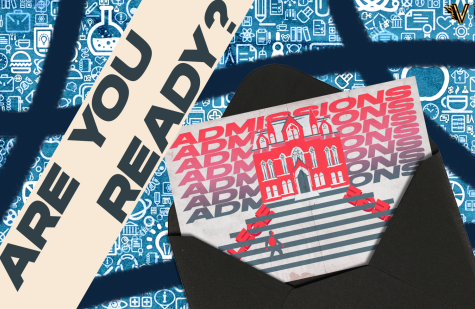All you need to know about the college admissions process— Part 1
Essays, transcripts, letters of recommendation, and test scores— those are just some elements of the college admissions process. Regardless of your grade level and first-gen status, the college admissions process can oftentimes be overwhelming and hard to navigate through.
As I’m awaiting my college decisions, I have compiled a list of aspects you need to consider and a suggested timeline so you can meet all your deadlines and not stress yourself. Before you begin the process, it’s best that you familiarize yourself with some terminology you will hear throughout the process:
- Test-optional: A test-optional college does not require test scores as a part of the application process but will consider the applicant’s scores if sent. Most colleges in 2021 are test optional due to the COVID-19 pandemic.
- Test-blind: Test-blind colleges do not consider test scores whatsoever. All colleges in the UC system are test blind as of 2021.
- Binding: If a deadline is binding, the applicant must attend the college if they get admitted.
- Non-binding: If a deadline is non-binding, the applicant need not attend the college if they get admitted.
- Restrictive: If a deadline is restrictive, the applicant mustn’t apply to another college until they hear back from the college they applied to.
- Non-restrictive: If a deadline is non-restrictive, the applicant can apply to another college if they wish to.
- Open admissions: When a college practices open admissions, every applicant with a high school diploma, GED, or certificate of attendance is offered an admission. This non-binding and non-restrictive process is common among community colleges. Community colleges usually receive and admit applicants throughout the year and applications tend to hear back in about two weeks.
- Rolling Admissions:Colleges with rolling admissions evaluate applications and admit students in order of received applications. This type of deadline is non-binding and non-restrictive. A few colleges that practice this type of admissions include UT Dallas, Texas A&M, and Penn State. The admissions for the fall semester usually open up during August or September and applicants hear back in four to six weeks after submitting all required documentation. Applying early to a college with rolling admissions is highly recommended as it can boost the applicant’s chances of getting in.
- Regular Decision (RD): Regular Decision is a non-binding non-restrictive decision type where applicants apply by early January and hear back by March. All colleges practice RD.
- Early Action (EA): Early Action is a non-binding non-restrictive decision type where applicants can demonstrate interest in a college by applying anywhere from usually early August until usually November. They tend to hear back mid-December or by January. Some (public) colleges have two deadlines (EA 1 for in-state applicants and EA 2 for out-of-state and international applicants) with different deadlines but about the same rules. A few colleges that practice this type of deadline include Baylor University, MIT, and UNC Chapel Hill.
- Priority Deadline: Similar to early action but this term is more likely to be used by colleges practicing rolling admissions.
- Early Decision (ED): Early Decision is a binding program applicants can apply to starting August until November. They hear back around mid-December. ED applicants sign an agreement with their guidance counselor and parent/legal guardian. Applicants cannot apply ED to more than one school though they may apply EA and RD. Should the applicant get in, they must withdraw from their other schools, if they applied to any. Some colleges offer ED 1 and ED 2 (both with different deadlines but same rules). While the ED deadline is binding, students who can’t afford the college after financial aid can choose to appeal and back out without any penalty if they don’t receive an attractive financial package. Popular colleges with an ED deadline include UPenn, Brown University, and Rice University.
- Restrictive Early Action/Single Choice Early Action (REA/SCEA): Restrictive Early Action is a non-binding, restrictive deadline that opens up around August and closes around November. Applicants hear back around mid-December. Only a handful of colleges including Yale University, Harvard University, and Stanford University practice REA.
- National Candidate Reply Date: All applicants must notify their college(s) with a definite answer to their admission by May 1 by sending a deposit to the college they’d like to attend.
Note:
- The dates given above are the most common dates; not all colleges have the same date for accepting and closing submissions so always make sure to check in with the college you’re interested in.
- For colleges with ED, EA, and REA, make sure to look at the specifics as colleges like Georgetown University don’t allow applicants to apply ED though they allow applicants to apply EA to other colleges. Similarly, University of Notre Dame’s non-binding REA decision type allows applicants to apply EA to other colleges but not ED.
Now that you have familiarized yourself with all 13 words, look forward to Part 2 for my suggested timeline to work on college applications!

The only senior in Vanguard News, Vaishnavi Josyula strives to voice Class of 2022 and hopes to continue Newspaper in college. She enjoys Math (especially...





